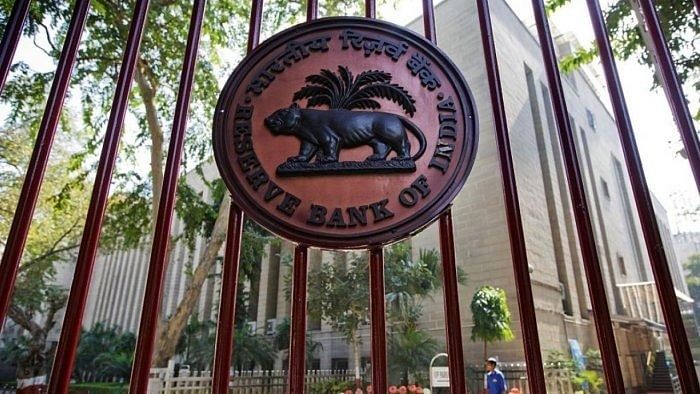
The unanimous decision of the six-member Monetary Policy Committee (MPC) to maintain the status quo on policy rates is not a surprise.
The repo rate, the rate at which banks borrow from the Reserve Bank of India (RBI), is unchanged at 4 per cent. The reverse repo rate, the rate at which interest is offered by the RBI to banks who park their excess funds with the RBI, is also unchanged at 3.35 per cent.
The MPC has tactfully navigated the tough situation of promoting economic growth and simultaneously addressing the issue of soaking up excess liquidity in the system without formally announcing the ‘normalisation’ of loose monetary policy.
It has anchored well by temporarily stalling G-SAP (Government Securities Acquisition Programme) and by announcing a calendar of 14-day auctions of Variable Reverse Repo Rate (VRRR).
This is also an indication that the reverse repo rate and repo rate will increase in the December/March MPC announcements, signalling the end of an era of “easy” and “lazy” banking by March 2022.
The status quo in rates, accommodative stance, dovish tone, 9.5 per cent GDP for FY22 is only to boost consumer sentiments, the last opportunity for bankers to pull up their socks and lend aggressively to core sectors like housing, real estate, infra, MSMEs and agriculture, as credit growth is sagging at less than 7 per cent albeit abundant liquidity of nearly Rs 9 lakh crore.
Support has been extended by the extension of the deadline of Special Long Term Repo Operations (SLTRO) till December 2021. This scheme is for Small Finance Banks with a corpus of Rs 10,000 crore and interest rates linked to repo rate for extending loans of three-year duration to MSMEs, unorganised sector and real estate for fresh lending up to Rs 10 lakh per borrower.
Further, to provide a fillip and a big push to credible Non-Banking Financial Companies (NBFCs), who undertake lending to underserved and unserved segments in tier 2 and tier 3 areas, and commercial banks lending to registered NBFCs excluding microfinance institutions, for on-lending to housing, MSME segment and agriculture, the time permitted for classifying such loans as priority sector lending (PSL) has been extended till March 2022. This is to boost lending to the affordable housing segment/real estate sector during the festival season and at a time when housing loan interest rates are at historic lows (less than 6.8 per cent), coupled with attractive income tax benefits and subsidy under Class Linked Subsidy Scheme under the Prime Minister Aawaz Yojana (PMAY) for realising the mission ‘Housing for all by 2022’.
The great surprise has been the reduction in CPI inflation projections for the full financial year FY22 at 5.3 per cent from 5.7 per cent, for the present July-September quarter at 5.1 per cent from 5.9 per cent and for October-December 2021 at 4.5 per cent from the 5.3 per cent projected earlier, as ‘base effect’ reductions of inflation will have to be taken with a pound of salt. A proper assessment is to evaluate performance and high-frequency economic indicators vis-a-vis FY 2019 position and not be irrationally exuberant with certain positive growth numbers of the present.
Core inflation may reduce in September 2021 — data will be released on October 12. The concern is headline inflation which will get adversely impacted due to the surge in global commodity prices, oil prices touching $82.6 per barrel and the depreciating rupee against US $.
These will feed into headline inflation, resulting in price hikes of fuel and food, edible oil, LPG and medicines due to a cascading effect.
Fuel prices have gone up for the fifth consecutive time in a week; in October till date, petrol and diesel prices have shot up by Rs 2.65/litre and Rs 3.35/litre respectively. This warrants immediate action by the central and state governments to cut excise duties on fuel.
The central government’s revenue for 2020-21 from excise duties on fuel alone was Rs 3.44 lakh crore — a 74 per cent increase YoY.
The hike in retail pump prices, supply chain disruptions and output gap will also adversely affect inflation. The inflation rate cannot be more than the repo rate.
A spike in urban demand for high-end cars and discretionary spend on luxury goods should not be misconstrued for real growth impulses.
The surge in personal, credit card, mortgage loans will eventually lead to stress loans/NPAs by this December end/March 2022.
Rural demand pick-up (tractor, two-wheeler and fertiliser sales), housing in tier 2-tier 3 locations, MSME loans, steel and cement sales, increase in private investments, and employment in rural and urban areas (not merely IT) are true litmus tests of sustained and durable economic growth.
In sum, the MPC’s ‘pause’ in policy rates is not to disturb the apple cart of growth but to provide a golden time for consumers to buy, bankers to lend, to resolve supply chain bottlenecks and to ensure that we reach the shore without rocking the boat.
(The writer is a former banker)
Check out DH's latest videos: